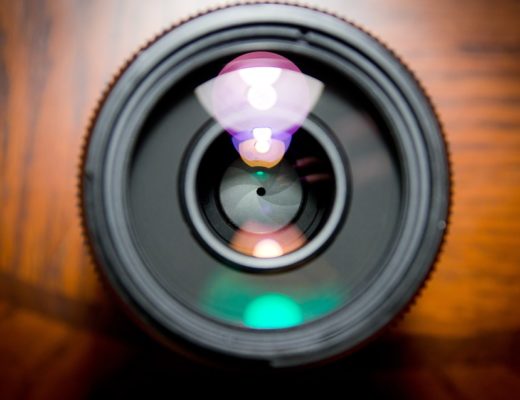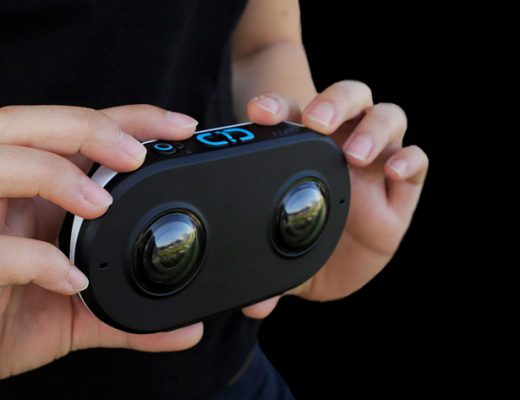While I’ve had my reservations about the 180° shutter angle rule for some time, it was only during a recent Spatial FaceTime chat with Immersive Company and The Spatialists that any remaining faith I had was shattered. And while I’m sure many of you are readying your typing fingers in angry response, I’m not suggesting you should change your shutter speed or shutter angle for “normal” frame rates where you want a “normal” level of motion blur. No, the rule is nonsense because it just doesn’t work at higher frame rates, and it’s merely coincidence that a 180° shutter angle works out at normal frame rates.
Pitchforks at the ready? I promise this isn’t clickbait. Let’s start with the basics and build up.
Shutter Angle vs Shutter Speed
While cinema cameras have traditionally used shutter angle to describe the length of a single frame’s exposure, photographic cameras have traditionally used shutter speed. Depending on where you started your career, you may prefer to use one or the other. Lower-end video cameras still tend to offer only shutter speed, while higher-end video cameras prefer shutter angle, or allow you to choose.

Each has advantages and disadvantages:
- Shutter Angle refers to the number of degrees (out of a full 360° circle) that a frame is exposed for — a hangover from film cameras. Today, it expresses exposure as a percentage of the frame rate — 180° = 50%, 360° = 100%, 90° = 25%. As the frame rate changes, exposure changes.
- Shutter Speed refers to the absolute amount of time a frame is exposed for (1/48, 1/60, 1/120, etc.) and it does not change with the frame rate. The top number (numerator) is always 1, while the lower number (denominator) goes higher as the exposure becomes shorter — or faster. Higher denominators are referred to as higher shutter speeds, though they do represent a shorter exposure.
The standing wisdom in the video industry — the “180° shutter angle rule” — is that you should always use a 180° shutter angle for “natural” motion blur. Calculating that back to a shutter speed, we can divide a shutter angle of 180° by the 360° in a circle to get 0.5. The equivalent recommended shutter speed is therefore half the length of a frame, or 1/double your frame rate.

For several common frame rates, then, let’s convert shutter angle to shutter speed:
| Frame Rate | Shutter Angle 360° | Shutter Angle 180° | Shutter Angle 90° |
| 24fps | 1/24 | 1/48 | 1/96 |
| 25fps | 1/25 | 1/50 | 1/100 |
| 30fps | 1/30 | 1/60 | 1/120 |
| 50fps | 1/50 | 1/100 | 1/200 |
| 60fps | 1/60 | 1/120 | 1/240 |
Controlling motion blur
A shutter angle of 180° (or a shutter speed of roughly 1/50 for typical cinematic frame rates) does give a pleasing level of motion blur that approximates what we see with our own eyes — hence the “rule”. Longer (i.e. slower) exposures will give more blur, and shorter (i.e. faster) exposures will give less blur.
For example, if you were to instead use a very short exposure time (e.g. 30°, or ~1/2000) then a regular human moving at regular speed will exhibit very little motion blur, giving a “choppy”, often unpleasant look to the footage. Well, I say unpleasant — video professionals are usually bothered by this, but regular people often don’t mind it, may not notice, or may even prefer it.Sometimes it’s an intentional choice, though. Action scenes, such as the battle scenes in Saving Private Ryan, often use a shorter exposure to freeze each frame, helping give a frenetic feel. But most often, this is not a choice, it’s just what phone footage looks like outdoors — a big reason why many viewers have become used to this look. Why does it happen?
Most phones have a fixed aperture, so they must vary the exposure time to give the sensor the right amount of light. Outdoors, without an ND filter to reduce the amount of light entering the camera, this almost always means a faster-than-ideal exposure, much shorter than a 180° shutter angle or a ~1/50 shutter speed would give you. This is why phone footage often looks a little choppy if people are moving quickly, though with slower subjects, the higher shutter speed is not always noticeable. (Mind you, I’m not arguing that we should just embrace shorter exposures!)

A lack of motion blur can also sometimes be noticed in professional TV or film productions, and it’s usually an indication that slo-mo is about to happen. Why? If a camera is set to a 180° shutter angle while recording at 24fps, it’ll give an exposure of 1/48 of a second. But when you record at a higher frame rate for slow motion, the 180° shutter angle rule means that your exposure time becomes shorter. Record at 60fps and you’ll get a shutter speed of 1/120 of a second; record at 100fps and the shutter speed will jump to 1/200.
So, even though shutter angle hasn’t changed, your exposure did change when you changed frame rate. While the camera may still be within its comfort zone, you may have to compensate, by adding more light, or changing ISO, or opening up the aperture. Of course, increasing shutter speed also changes the exposure, but at least it’s an obvious, direct change, not something you have to remember and calculate.
At normal speeds, a 180° shutter angle makes sense
The 180° shutter angle rule works well enough for people walking and talking at “normal” frame rates of 24–30fps, where it corresponds to a shutter speed of 1/48–1/60. However, when your subjects are moving a little faster than normal (battle scenes, fight scenes, people running, concert pianists playing quickly) then the 180° shutter rule will give you footage that’s too blurry at a regular frame rate. Faster subjects recorded with a shorter exposure will appear choppier, but clearer.
Now, if you can capture these faster subjects at a higher frame rate (let’s say double the normal frame rate) then a 180° shutter angle work will work once again, giving a shorter exposure. Running the maths shows that for footage shot at 48fps and played at 24fps for a 50% slo-mo effect, you’ll now be using a ~1/100 exposure, and the motion will be less blurry as a result.
But here’s the key thing: for natural motion blur, the exposure time should reflect how fast your subject is moving, not the frame rate you’re shooting at. The 180° shutter angle rule only works at “normal” frame rates for “normal” subjects, and “faster” frame rates for “faster” subjects. It totally falls down at extreme or unusual frame rates, and they’re becoming more common than you might think.
But too often, the rule breaks
If your subject is moving relatively slowly, you don’t need to shoot at a high shutter speed, even if your camera is recording at a higher frame rate. Motion blur is about how fast the subject moves in the length of a single frame’s exposure time, and if this is fast enough to freeze motion, there’s no point going faster.
For proof, look to immersive filmmakers, who routinely record at 90fps with a 360° shutter angle — i.e. 1/90 exposure time. If you’re filming normal people doing normal things, there’s no benefit in knocking your exposure down to 1/180 instead of 1/90, because the motion in each frame has already been frozen.
The converse is true of very fast objects. If you’re pushing your camera to its limits, trying to capture something moving very swiftly, you shouldn’t be limited to only “1 over double the frame rate”. If you want to capture clear frames, without blur, crank the shutter speed up as much as you want, well beyond your camera’s frame rate limits. A hummingbird’s wings will not be “just the right blur” at “1 over double your frame rate”. No, it’s a factor of how fast its wings are moving and how long you expose them for.
Most important, if you’re filming displays or under some kinds of lights, matching your exposure time to the refresh rate is important to avoid flicker. I routinely use 1/60 at 25fps when filming conferences, because the speakers are often mostly lit by the 60Hz projection screens they’re standing next to.
Making a new rule
If the 180° shutter angle rule is only useful in a narrow band of frame rates, then the rule isn’t much of a rule at all. Instead, I’d recommend picking a frame rate based on how quickly your subject is moving and how the footage will be played back — unless there’s a good reason to use a specific number instead. And yes, between 24 and 60fps this might very well roughly line up with the old “1 over double your frame rate” rough rule of thumb.
Still, following the 180° shutter angle rule would be a mistake in several situations:
- When shooting at 25fps, if your subject is illuminated by a 60Hz light source (like most projectors) you should use 1/60 to avoid flicker.
- When shooting at 24 or 30fps, if your subject is illuminated by a 50Hz light source (like older lights in Europe/UK/Australia/New Zealand and other PAL territories) you should use 1/50 to avoid flicker.
- When recording TV or computer screens, use a shutter speed that’s an even multiple of the display’s refresh rate. (Your camera may have additional features like Synchro Scan to fine-tune exposure time in an effort to combat flicker.)
- When you’re recording regular subjects at higher frame rates, such as 90fps for immersive, you can use a 360° shutter angle (i.e. 1/the frame rate).
- When filming footage that will be tracked in post, motion blur can interfere with tracking. Consider shooting at a faster shutter speed.
- If you want to speed ramp between regular and slo-mo, pick a shutter speed that isn’t too blurry for your subject’s movement and stick with it, or you’ll telegraph “slo-mo coming soon!” to your audience.
- If you want to record a very fast-moving subject, crank up the shutter speed, no matter what frame rate you capture.
- If you’re really starved for light, using a slower shutter is an option. Yes, there might be more motion blur, but if it’s a choice between motion blur and noise, at least you can make that choice.
If you’re looking for a new rule, I’d go with something like:
“Most of the time, match your lights at 1/50 or 1/60, but go faster if your subject does.”
Conclusion
At the end of the day, you can describe exposure length in terms of shutter angle or shutter speed as you wish, but shutter speed consistently describes exposure length — independent of frame rate — and shutter angle does not. If you’re chasing a consistent motion blur, choosing an appropriate shutter speed for your subject and the conditions is more important than a maintaining a fixed shutter angle.
I don’t expect this article to rewrite a rule which many thousands of people have been taught, especially as the traditional rule does “work out” for many normal frame rates with subjects moving at normal speeds. But just like a broken clock, it’s only right some of the time. The further you move away from historical norms, the less often the rule applies, and there are too many exceptions already.
If I’ve changed your mind, change some more. Tell your friends. We can turn this ship around.
P.S. Still don’t believe me? Here’s a video from 2021 which came to the same conclusion.

Filmtools
Filmmakers go-to destination for pre-production, production & post production equipment!
Shop Now











